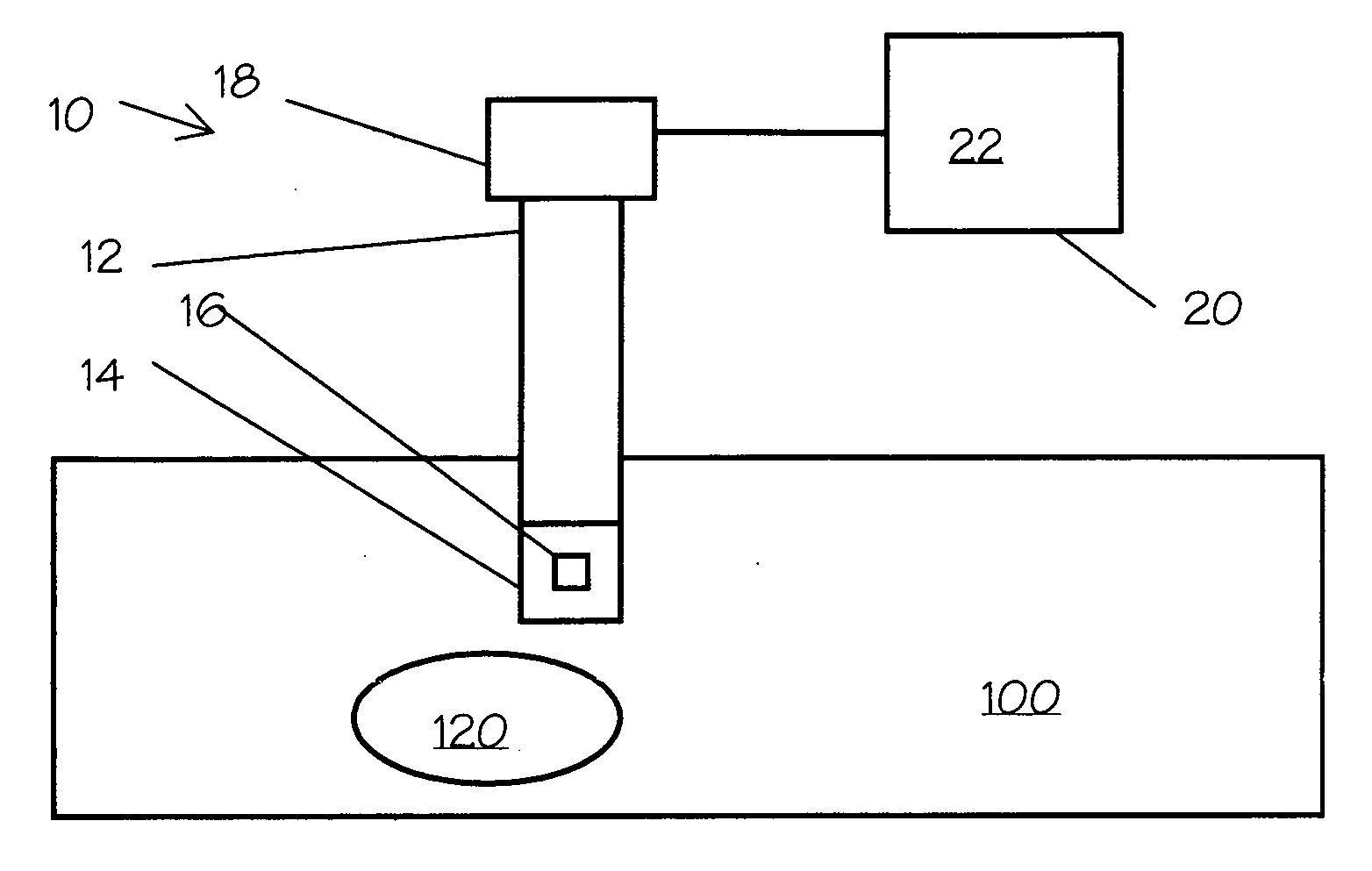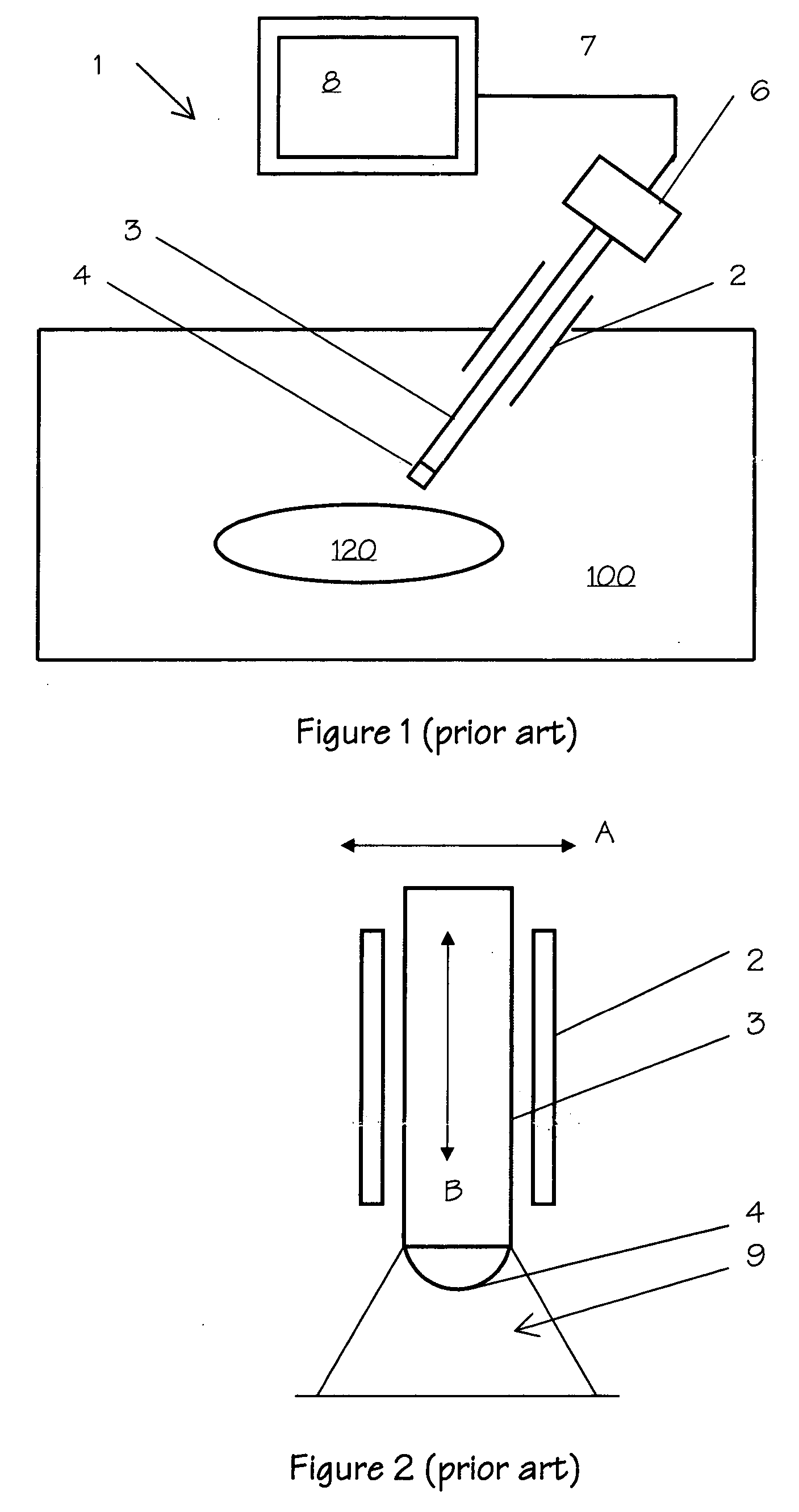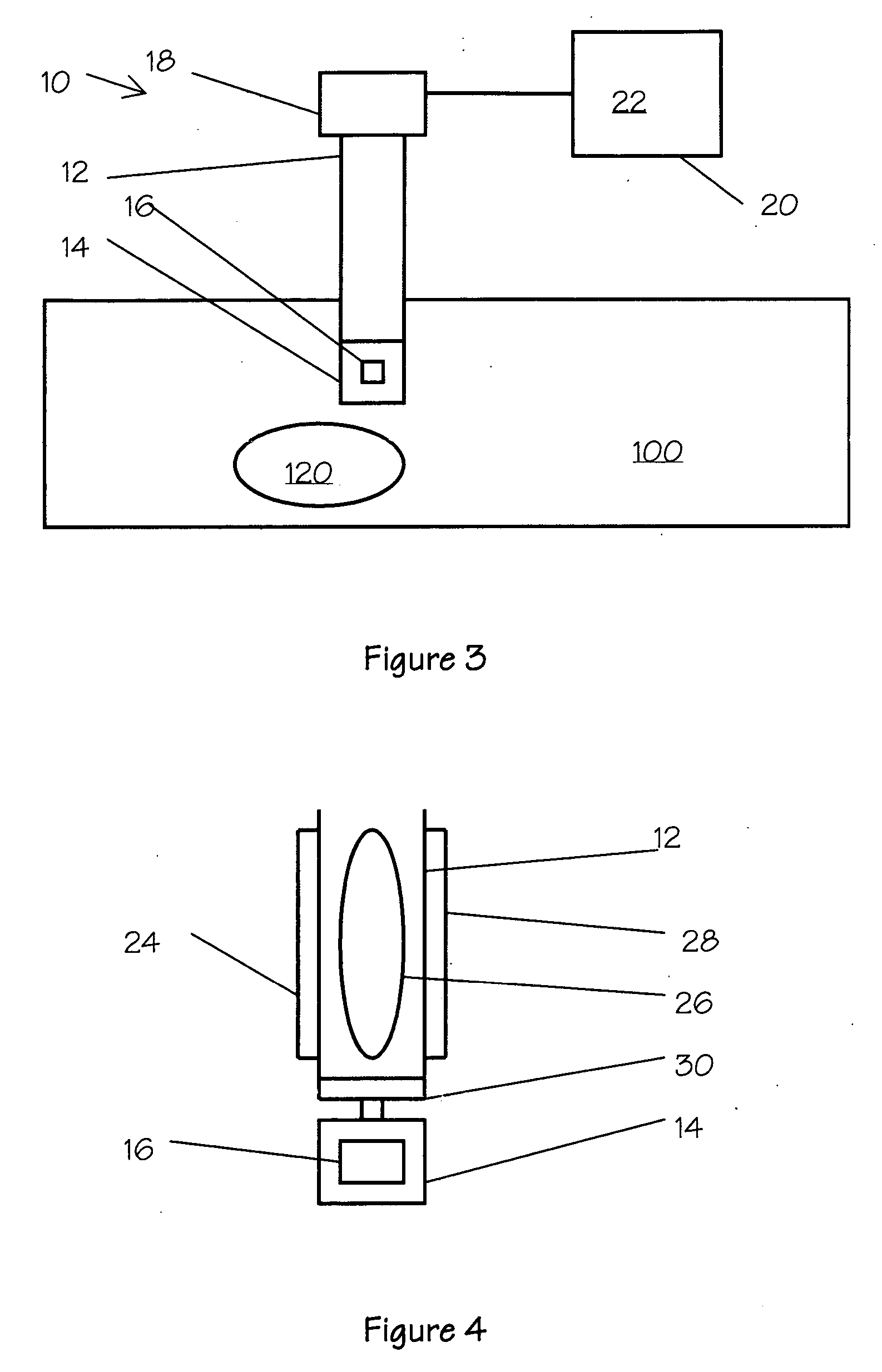Biological imaging systems
- Summary
- Abstract
- Description
- Claims
- Application Information
AI Technical Summary
Benefits of technology
Problems solved by technology
Method used
Image
Examples
Embodiment Construction
[0017] As shown in FIGS. 3 through 5, the present invention includes a laparoscopic imaging apparatus 10 adapted to provide a number of improvements over the prior art. An example imaging apparatus 10 includes a housing 12, mountable in a known relationship to a patient, an image capture element 14 mounted with the housing 12, and an image control system 18 connected to the image capture element 14.
[0018] The example housing 12 is adapted to be at least partially inserted within the body of the patient, and can function as its own insertion device thus eliminating the need for a separate trocar. In other variations from the example embodiment, the housing 12 is adapted to be substantially fixed relative to the skin of the patient, thus minimizing any movement of the imaging apparatus 10 and reducing the risk of any damage to the tissues surrounding the incision through which the imaging apparatus is 12 inserted into the patient's body. As used herein, the term skin refers to the ep...
PUM
 Login to View More
Login to View More Abstract
Description
Claims
Application Information
 Login to View More
Login to View More - R&D Engineer
- R&D Manager
- IP Professional
- Industry Leading Data Capabilities
- Powerful AI technology
- Patent DNA Extraction
Browse by: Latest US Patents, China's latest patents, Technical Efficacy Thesaurus, Application Domain, Technology Topic, Popular Technical Reports.
© 2024 PatSnap. All rights reserved.Legal|Privacy policy|Modern Slavery Act Transparency Statement|Sitemap|About US| Contact US: help@patsnap.com










